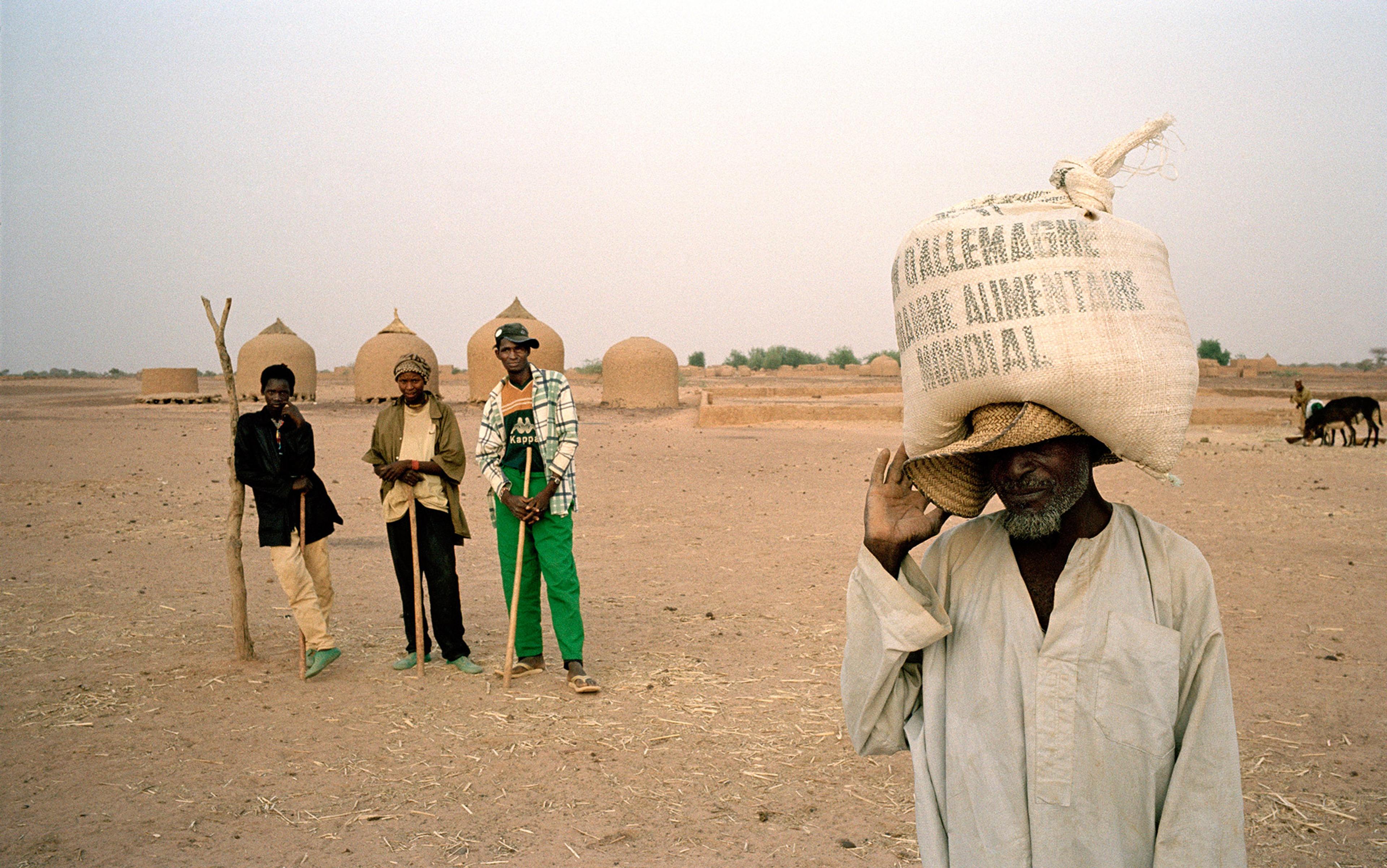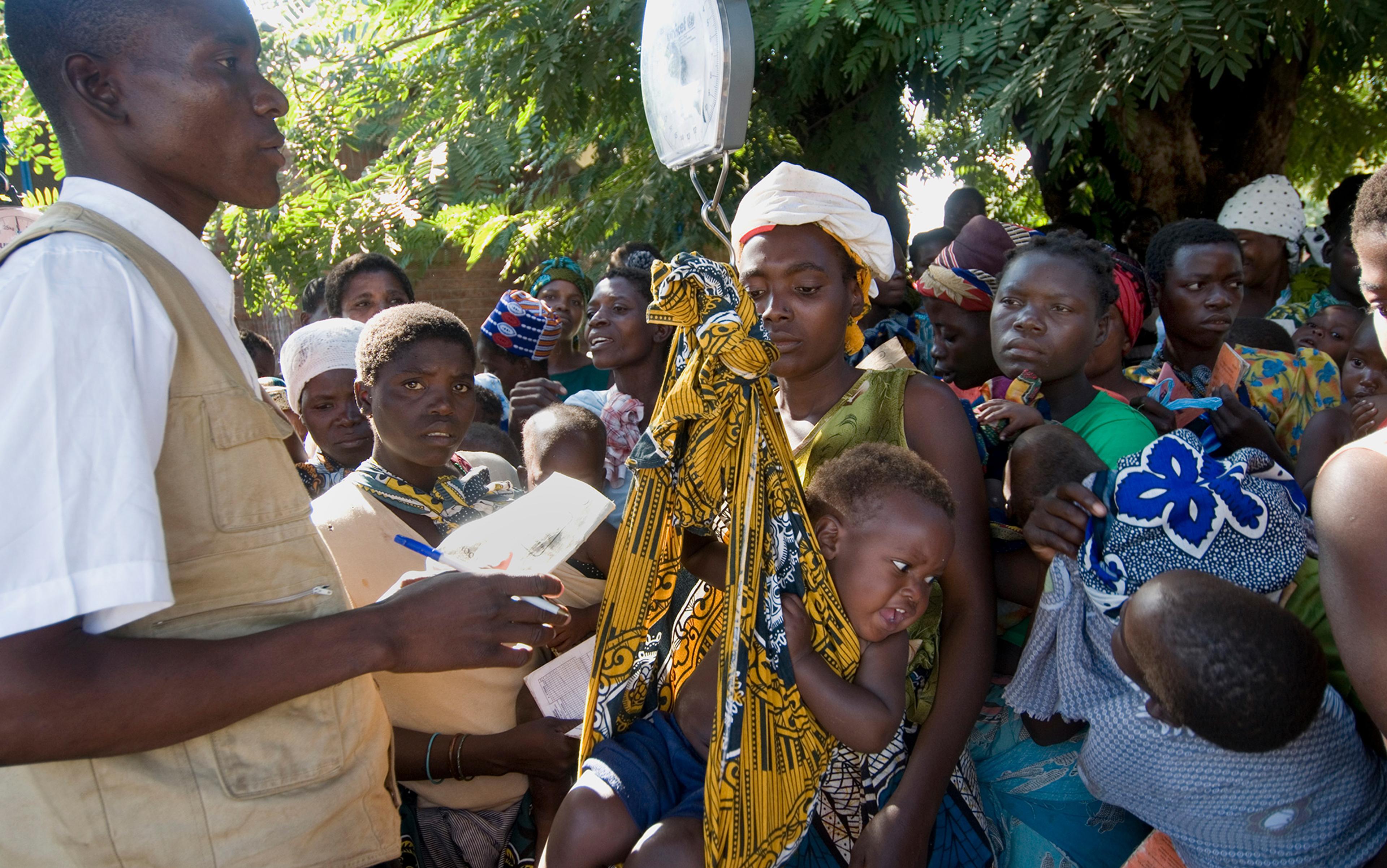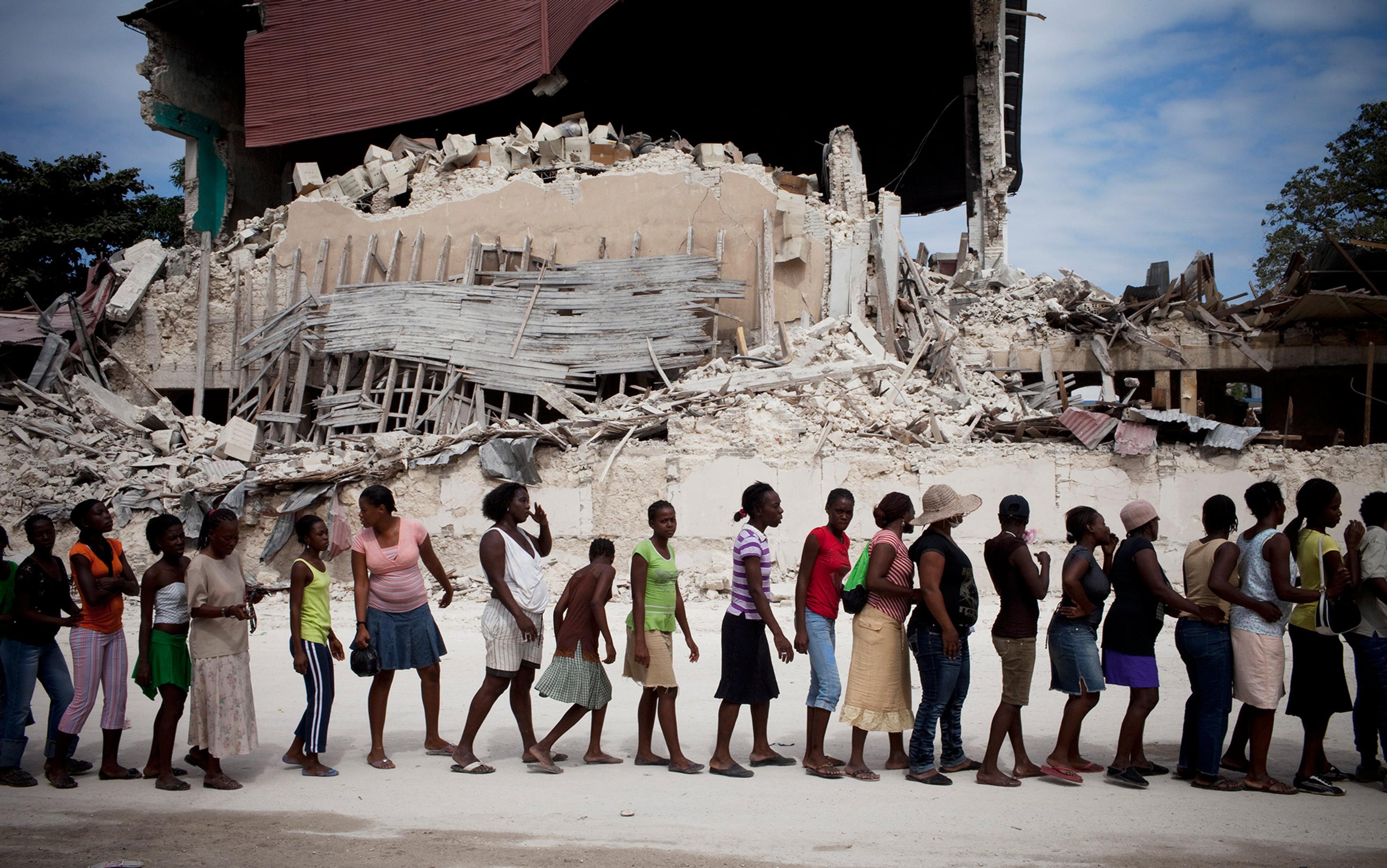I became an aid worker in the 1990s, just as the break-up of Yugoslavia and the genocide in Rwanda cast a long shadow over the humanitarian sector. Those highly visible political failures were a major influence on my decision. I was possessed of a distressingly youthful belief that we could do better in the core humanitarian mission of saving lives, feeding the starving, healing the sick, and sheltering the displaced from natural disasters and armed conflicts.
I worked on co-ordination with the United Nations and non-governmental organisations (NGOs): identifying gaps and overlaps in the delivery of aid, then persuading humanitarian organisations to avoid those overlaps and fill those gaps, a slow and frustrating process of herding cats. Co-ordination had become increasingly important as the humanitarian sector expanded dramatically following the end of the Cold War. In Kosovo, after the NATO bombing campaign of 1999, we registered one NGO for every day of the year. A decade later, after the 2010 earthquake near Port-au-Prince, an estimated 3,000 NGOs descended on Haiti.
It wasn’t just the size of the humanitarian sector that was increasing – the scope of humanitarian work was widening as well. In the post-Cold War world, humanitarian organisations were increasingly enlisted as government sub-contractors in a larger political project: the post-conflict reconstruction of entire countries. After Kosovo I found myself in Afghanistan, where Secretary of State Colin Powell referred to NGOs as a ‘force multiplier’ for the US military; then Iraq, where Andrew Natsios, then head of US overseas aid, asserted without apparent irony, that NGOs were ‘an arm of the US government’.
Some took this assertion literally. On 19 August 2003, the UN headquarters at the Canal Hotel in Baghdad was bombed by enemies of the US government. The bomb – placed outside the information office that I had helped to set up – killed 22 and injured more than 100 people. I had left Baghdad a few weeks earlier, precisely because I was worried by deteriorating security. My youthful belief that we could do better was still intact (even if my youth was not), but it now seemed clear that humanitarianism had taken a wrong turn somewhere.
As we mark the 150th anniversary of the first Geneva Convention, it’s worth stating that humanitarian aid is not a waste of money – it can mean the difference between life and death – and for the most part that money is well-spent. While some criticism is warranted, the humanitarian community is not blind to its shortcomings, and has sought to improve its work since the mid-1990s.
One of the most important initiatives in this regard was the publication in 1994 of the Code of Conduct for the International Red Cross and Red Crescent Movement and NGOs in Disaster Relief. The Code was welcomed by NGOs as a largely successful attempt to articulate core humanitarian principles, but it also doubled as a field guide to the tensions inherent to the sector. After the more obvious principles – humanity, neutrality, impartiality and independence – the last of the Code’s 10 points goes in a surprising direction: ‘In our information, publicity and advertising activities, we shall recognise disaster victims as dignified human beings, not hopeless objects.’
It’s now widely acknowledged that affected communities don’t wait around for outside help, but actively develop their own strategies for coping with disaster. Yet the humanitarian community has struggled to embody this realisation. To their public donors, charities continue to present a Black Box of Suffering. On the front of the box is the single image of a suffering child that serves as a proxy for all the suffering that can be imagined. ‘What’s happening inside this box is terrible,’ it says, ‘and you don’t want to see inside.’ Then, the pitch: ‘Give us your money, and we’ll put it into the box, and that will end the suffering.’
The Black Box is effective in terms of raising funds, but its platonic ideal of suffering obscures the wider context in which that suffering takes place. The lack of context leaves the public with little understanding of how the aid industry works – when questioned, most people offer some variation on the theme of ‘Whites in Shining Armour’ – which in turn prevents NGOs from being fully open about the problems of delivering aid in the most challenging environments on Earth. Because all NGOs rely on public support, they face a dilemma: more nuanced messages will not reach their public, but less nuanced messages leave them open to criticism.
Humanitarianism has been intimately linked to the media from the beginning. The Swiss businessman and social activist Henry Dunant, who inspired the early Red Cross movement, had his book A Memory of Solferino (1862) printed at his own expense as an advocacy tool to spread the humanitarian message across Europe, arguing that ‘in an age when we hear so much of progress and civilisation, is it not a matter of urgency, since unhappily we cannot always avoid wars, to press forward in a human and truly civilised spirit the attempt to prevent, or at least to alleviate, the horrors of war?’ Pressure on governments to adopt the Geneva Conventions came from popular sentiment, as the public gained greater access to information about the reality of modern war through the popular press. The growth of mass media in the 20th century enabled spectacles such as the Live Aid concerts in 1985 for famine relief in Ethiopia. NGOs realised that they could shape the humanitarian narrative using their access to disaster-affected areas.
the ‘rich West giving to the poor rest’ no longer makes so much sense
Today, writers from the Sunday supplements of UK newspapers accompany NGO staff to health clinics in inaccessible places, returning with stories of stoic suffering and sterling effort. This worked well into the 1990s, when communication was still controlled by corporations and information sources were scarce. With the information revolution, however, individuals and groups affected by disasters have increasing access to digital communications that provide alternative perspectives not mediated by humanitarian organisations. The Black Box is breaking open, exposing the humanitarian community to more public scrutiny than ever before.
Humanitarianism was shaped by specific historical circumstances that no longer exist. Global economic and political developments – including the rise of Brazil, Russia, India and China – put a question mark over the assumptions on which the system was built. The same technologies that have given disaster-affected communities a voice also enable them to organise themselves more effectively, which in certain places means less need for external organisations to become involved. While there will always be those caught in the wake of natural disasters and human conflicts who need some form of outside assistance, the ‘rich West giving to the poor rest’ no longer makes so much sense.
It might simply be that humanitarian NGOs are no longer the right type of organisation to meet the needs of the future. It’s not merely that they are no longer fit for purpose: it’s increasingly uncertain what that purpose is. What are humanitarian organisations for? Are they delivery vehicles for humanitarian assistance – logistics companies with a side order of social concern? Or are they delivery vehicles for humanitarian principles, with any tangible assistance they provide is just a manifestation of those principles?
Focused on the next emergency rather than the last, unable to draw easily on past experience, plagued by a high turnover of staff, it seems as if each new generation of aid workers suffers from a kind of ‘Year Zero’ thinking. This continues despite efforts to professionalise aid work. If we fail to pay attention to how history has shaped the humanitarian sector in the past century, we cannot begin to understand what is needed to shape it to meet the needs of the coming century.
The modern humanitarian movement began on 24 June 1859, at the Battle of Solferino in Italy. For the last time in European history, monarchs were in direct command of both sides of the battle. After Solferino, the European states began their trek towards the horrors of total war in the 20th century. Yet a parallel history also began that evening: businessman Henry Dunant, horrified by the carnage he’d witnessed in the battle’s aftermath, organised a relief effort to care for the injured and the dying – regardless of which side they had fought on.
From this gesture the modern humanitarian movement was born, in the form of the International Committee of the Red Cross (ICRC). The First Geneva Convention (1864) was the first international agreement to cover the treatment of the sick and wounded on the battlefield. It covered only military personnel, but laid the foundations for an entire body of international humanitarian law. It wasn’t until the First World War that the ICRC began to systematically address the needs of civilian populations affected by war, and the word ‘humanitarian’ itself appeared in law for the first time only in the 1929 Convention.
Between the two world wars, elements that we would recognise today began to appear, such as the League of Red Cross Societies (forerunner of the International Federation of Red Cross and Red Crescent Societies) and early NGOs such as the Save the Children Fund. It was only after 1945, however, that a new political order emerged, and the desire to avoid another ruinous world war led to the creation of the United Nations. As the exhausted old empires began to unravel, international affairs were re-shaped in the bipolar image of the Cold War.
In this context, the Marshall Plan for the recovery of Europe during 1948-51 was both a means of rebuilding shattered nations and of demonstrating the superiority of democracy. It set a precedent for overseas development assistance. At this point ‘humanitarian’ aid (the lifesaving work) was not emphasised, and the focus was on development (longer-term social and economic growth), although new international organisations were created, such as the UN High Commissioner for Refugees (1950) and the UN World Food Programme (1961).
NGOs were tolerated, even encouraged, by Western governments as living proof of the superiority of democracy
Legal rights were extended to protecting ‘Civilian Persons in Time of War’ by the Fourth Geneva Convention in 1949, and further by Additional Protocols in 1977. This legal framework relied on the responsibilities of nation-states, but governments could not always be relied upon to abide by the law. Newly decolonised countries inherited the trappings of government, but not the capacity required to administer their responsibilities, particularly in the face of disasters; and unresolved problems caused or exacerbated by colonial policies led to civil wars in which civilians tended to suffer disproportionately, whether through design or neglect.
The UN agencies were bound by mandate to work only with governments, leaving space that was filled by NGOs who positioned themselves as giving voice to the voiceless, ‘speaking truth’ to the power of the Western bloc. NGOs were tolerated, even encouraged, by Western governments as living proof of the superiority of democracy with its freedom of expression and association, in contrast to their absence in the Soviet bloc. They were also a channel for defusing potentially revolutionary sentiment in emerging nations. Released into the marketplace, NGOs competed for the public’s attention – and their cash – during large-scale disasters such as the Biafran war of 1967-70 and the Ethiopian famine of 1984-85.
In both Biafra and Ethiopia, NGOs were in fact being manipulated by national governments to achieve wider political ends. The evidence suggests that humanitarian aid enabled the secessionist Biafran government to continue fighting Nigerian forces even after it had lost militarily, prolonging the suffering of local communities who were caught up in the conflict. In Ethiopia, humanitarian aid was also politicised during a famine that was in part caused by government policy, although the full extent of aid agency complicity remains an open question. Aid workers who were aware of these problems could never explicitly acknowledge them without jeopardising public (and therefore) financial support; many NGOs were simply naïve about the political dynamics of the Four Horsemen.
Humanitarianism had come of age during the Cold War, but the end of the Cold War meant that NGOs continued to be useful footsoldiers for the democratic project. After the diplomatic catastrophe that was Bosnia, politicians appropriated the language of humanitarianism, leading to the oxymoron of NATO’s ‘humanitarian intervention’ in Kosovo. Some argued that this use of ‘humanitarian’ showed that the word had lost its meaning, but what it really showed was that the word still had power, albeit not in a straightforward sense. We found ourselves in Afghanistan and Iraq precisely because humanitarian action was being shoe-horned into a security agenda.
Since the 1960s, there had been tension between what have been called Dunantist and Wilsonian NGOs. Perhaps more usefully described as ‘principled’ and ‘pragmatic’ respectively, Dunantists (named after Henry Dunant, and usually European) claim an apolitical stance aloof from state interests, while Wilsonians (named after the US President Woodrow Wilson, and usually American) accept some level of compromise and involvement with those interests. The Canal Hotel bombing in Baghdad made clear that this internecine debate was no longer theoretical but very, very practical.
After the 9/11 terrorist attacks on the US, many governments exploited the Wilsonian approach to humanitarianism, using NGOs as Lego bricks – interchangeable not just with each other, but also with government, military or private-sector actors. The NGO response has been an implicit acceptance that humanitarian assistance is a market, and they need to maintain their market position, primarily though professionalising, in order to fit the technocratic logic of donor governments. So far, so good: according to the 2014 Global Humanitarian Assistance report, funding for humanitarian crises remained high throughout the global financial crisis, and in 2013 reached a record high of $22 billion.
Still, it’s worth putting this in context. In 2013, the size of the US pet industry was nearly three times that value: just under $56 billion. The money available for humanitarian aid is still nowhere near what is required to meet the needs of disaster-affected communities today, when there are more ongoing major disasters than any time since the mid-1990s. The humanitarian community is wrestling with the future: multiple reports over the past decade have tried to identify future challenges, but failed, instead responding belatedly to existing trends – climate change, urbanisation, demographic shifts.
More worryingly, the solutions proposed by these reports are more of the same: more professionalisation, more decentralisation, more regulation; the organisational equivalent of re-arranging the deckchairs on the Titanic. Modern humanitarianism is one of the most radical ideas in the history of human thought yet, as the international development entrepreneur Paul Polak has pointed out, institutions are simply ‘radical ideas cast in concrete’, and the institutions that have been built around humanitarianism now struggle to support it.
This is not a techno-utopian view of the future in which the internet sweeps away all the injustices of the world
Our network age demands a network model. It demands that we shift away from the old industrial, imperial model of delivering material relief along a supply chain from rich to poor countries. We need a post-industrial, post-imperial model that mobilises resources through global networks. Ori Brafman and Rod Beckstrom’s The Starfish and the Spider (2006) provides a starting point: the decentralised structure of what they call ‘starfish’ organisations makes them more resilient, compared with more centralised ‘spider’ organisations. Humanitarian organisations must become hubs, connecting individuals and communities to enable them to share knowledge and resources more freely, and using their position to embed humanitarian principles within their networks.
Those networks are not just about providing cash, or medical support, or shelter kits, but about creating the opportunity for a more inclusive discourse what it means to be humanitarian: how to create a ‘people’s humanitarianism’, rather than the private club that exists now. This is particularly important since problems at the global level (such as climate change, financial crises and population movements) affect all of us, albeit unequally; and its urgency has been underlined this year, as multiple, overlapping emergencies in the Central Africa Republic, Iraq and Syria, and South Sudan – as well as the Ebola outbreak in Africa – have stretched the system further than at any time since I first entered the sector.
New communication technologies create opportunities to engage both disaster-affected communities and the giving public on a more equal footing – indeed, the web begins to break down the distinction between the two. There are promising developments: the Communicating with Disaster Affected Communities initiative is looking at outreach efforts; the Humanitarian Innovation Fund is testing novel approaches; the Digital Humanitarian Network is bringing together newer, tech-focused organisations; and the Start Network of UK NGOs is experimenting with new ways of working. In 2016, the UN-organised World Humanitarian Summit offers an opportunity to set a new course for the community, bringing together many of these threads.
This is not a techno-utopian view of the future in which the internet sweeps away all the injustices of the world. The web could lead to a dead end of corporate monocultures, but part of our struggle against that must be the continual renewal of these grassroots connections. We can’t predict the future, but we can shape it by forming alternative narratives. Humanitarianism is not a pile of Lego blocks to be re-arranged as required, but a set of organising principles that tell a compelling story about what we want our civilisation to look like; about how we wish to act towards each other.
For decades now, humanitarian organisations have been approaching the public to ask for coins in the purse or signatures on the page. As the Black Box breaks open, this will no longer be enough, and NGOs should lead the shift away from institutions, and towards a peoples’ humanitarianism. It is quite likely that at least a few of those organisations will not survive the transition but that isn’t a reason for not making the change. Of the Fortune 500 firms first listed in 1955, nearly 90 per cent no longer exist in 2014, and this type of creative destruction is sorely lacking in the humanitarian sector.
The alternative is a zombie humanitarianism, going through the motions but lacking the spirit, the same spirit that spurred Dunant to action: the simple belief not just that we could do better, but that we could be better.






